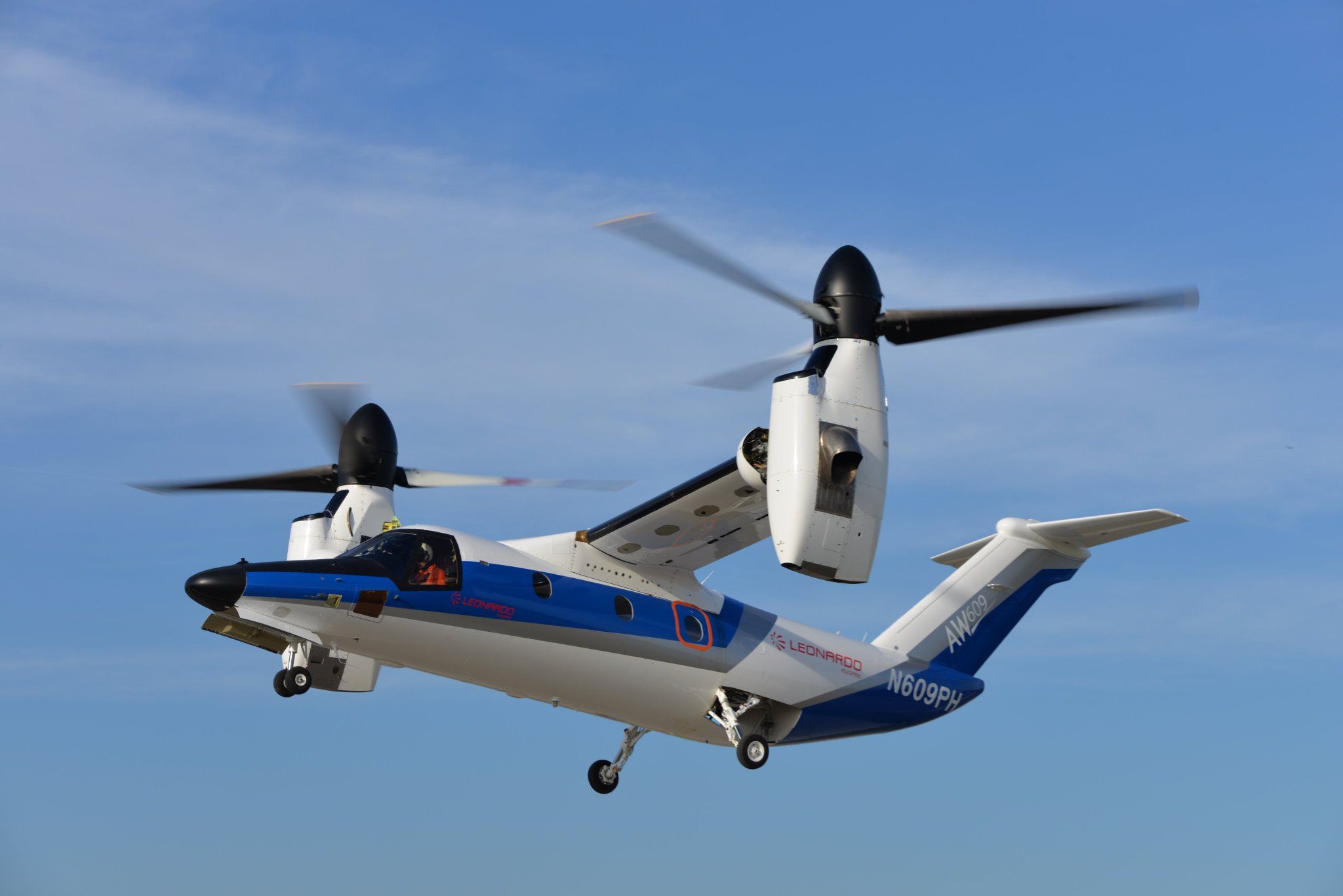Leonardo Helicopters announced that it successfully completed the first flight of an AW609 tiltrotor prototype “fully representative” of the aircraft’s final production configuration last week. The aircraft is the fourth AW609 prototype and, according to the company, represents the model’s entry into “the final program development and ground/flight testing stages.” The flight took place at Leonardo’s facility in Philadelphia, Pennsylvania.
“With this flight, the world’s first multirole commercial tiltrotor achieved a major milestone on its path to FAA certification,” the company said. “[The AW609] will be certified under the FAA’s new Powered Lift category, the first new category of aircraft certified by the FAA in decades.” Leonardo has not announced an expected timeline for certification of the aircraft.
The AW609 is designed for missions such as VIP transport, emergency medical services, search and rescue, and military special operations. It will seat up to nine passengers and is powered by two Pratt & Whitney PT6C-67A engines. The AW609 has a range of 750 NM, top cruise speed of 275 knots, 25,000-foot service ceiling and useful load of up to 6,300 pounds. Features include the Collins Aerospace Pro Line Fusion avionics suite, fly-by-wire flight controls and flight into known icing capability.




































Very impressive, with a price tag to match. Congrats.
Engine failure during power lift???
I believe that the two gearboxes are interconnected, so that you still have some power to both rotors even with an engine failure. That should help … a bit.
This tilt-rotor is about the size of a Blackhawk helicopter. Ever have a car, outside office entrance at an airport, or an airplane tied down within 100-300 feet of a vertically descending Blackhawk? If not be happy because VTOL machines this size can damage a lot of things with their massive rotor wash.
This tilt-rotor may a lot of technology, but is an unusual airplane/helo looking for a market. And after 17 years of development, it still has no defined market. Last price tag estimates from 2015 was 24-35 million dollars a piece. Leonardo is mum about price today. 17 years and four prototypes later, it still is not certified. Michael Bloomberg has been waiting for his since 2015. This fourth tilt-rotor has been under construction since 2015.
None of the romantic artist renderings of Martha’s Vineyard backyard patio helipads show the reality of flying patio furniture, wine glass projectiles, windswept neighbors looking like they are on a carrier flight deck at launch and recovery time, patio doors and windows shattering, and the howl of two 2000SHP PT-6’s as this tilt-rotor the size of a King Air 350 takes to the skies for that scenic flight to the Bahamas. No backyard launches for this machine. Minimally, this VTOL has to be based at a designated heliport.
A tilt-rotor may be working for the Marines, but the reality of what it takes to lift a pilot and 9 passengers vertically with the infrastructure requirements for safety is not something that can work for downtown Metropolis USA without major, major investment. It’s one thing to make some sort of successful VTOL, quite another to simultaneously pull a second rabbit out of the hat to have a place to launch and recover them.
And yet, who wouldn’t trade their S-76 for a 275 knot alternative?